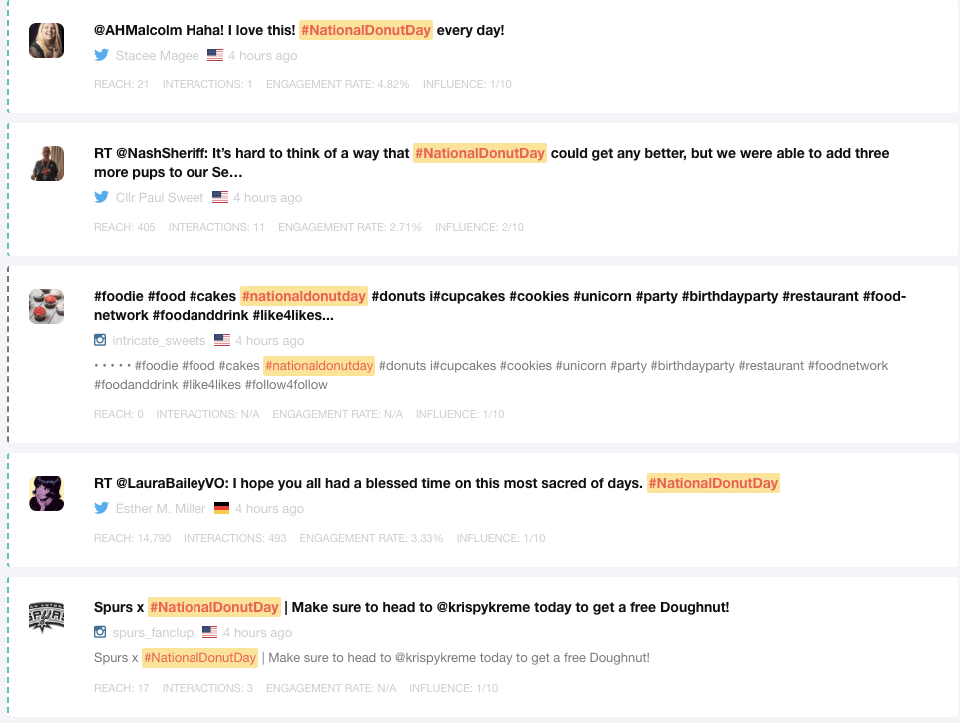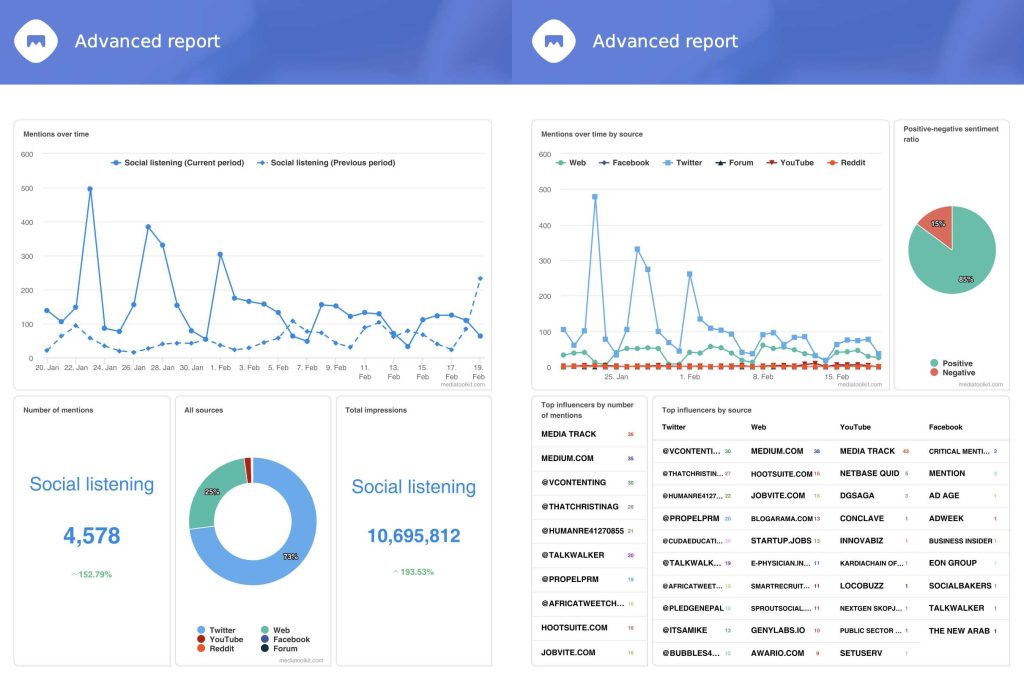When someone influential talks about your brand, it creates a domino effect of awareness and interest that can lead to improved brand affinity and guides more potential customers to your product or service.
Whether it’s to get more eyes on your latest press release, build links to a new industry report your company created, or to get your existing content shared more, PR outreach is one of the best ways to make it happen.
? Read Digital PR Explained: Best Strategies and Tools
If you can master the PR outreach process, you’ll have a repeatable and effective way of getting in touch with decision-makers that can help you move the needle for your brand.
In this article, we’ll show you actionable steps you can follow to set up and scale your PR outreach process.
Let’s dive in.
What is PR Outreach?
There’s no single way to define PR outreach. However, it’s the process of finding and reaching out to journalists, publishers, and content creators who write about content relevant to your business.
By reaching out to them, you’ll start a conversation and ideally, they’ll share a relevant story about your brand on their website or social media, helping you amplify your brand and get in front of new potential clients.

How to Improve Your PR Outreach Campaigns
1. Find highly relevant PR outreach opportunities
One of the main challenges in a PR outreach campaign is finding the right opportunities.
You have to find out which journalists and content creators are writing about and sharing topics related to your business, and then assess whether they’re a good fit for your pitch.
Here are a few ways to do that:
Google your keywords
The simplest way to find PR opportunities is by using Google. Type in your keywords and see what comes up. For example, if you run a pet store, you might search for “pet blogs.”
You’ll find plenty of blogs that are already ranking on top of Google and are therefore likely to be influential.
When you find a site sharing content that looks relevant to your PR campaign, you can source the contact details for the founder or most relevant marketing contact at the company and reach out with a personalized cold email to see if they’d be interested in covering your story.
Read 6 Ways to Come up with Content Ideas Using Determ
Use a media monitoring tool to find what readers and writers care about
There are a variety of helpful tools out there that you can use to improve how you find relevant bloggers and journalists. Some of them are free, while others require a subscription.
For example, with BuzzSumo, you can search for any topic and see the most popular articles on the topic in question. This is a great way to find relevant journalists and bloggers, because you can immediately see that they’re already writing about topics related to what you do – so there’s a strong chance they’ll be interested in hearing from you.
You can also use a market research tool like Determ to track mentions of your brand online. This shows you if journalists have talked about your company in the past, and if so, there’s a likelihood they’ll want you to send them an update if you have relevant news that they can share.

As well as that, you can ensure your pitch is as relevant as possible by tracking growth in searches for a particular topic. If you see a topic is growing in popularity but a journalist hasn’t covered it yet, you can reach out to them and provide them with the most relevant content at the best time.
In addition, a good media monitoring tool like Determ can provide you with demographical data on gender, which will give you an extra perspective when making decision.

Use social media
Social media is a treasure trove of leads for PR outreach.
You can use Twitter, Facebook, and LinkedIn to find bloggers and journalists who might be interested in your story.
Naturally, you’ll want to focus on the platforms that are most relevant to your niche. There’s no point spending hours every day searching LinkedIn for relevant opportunities if you know journalists in your niche don’t hang out there but spend their time on Twitter.
You can even track certain hashtags like “#journorequest” that journalists are using to source quotes and companies to feature and reach out to anyone that is a fit for your pitch.
Once you’ve compiled a list of potential leads, it’s time to start reaching out to them.
Read Social Media Monitoring and Social Media Management – Definition and Differences
2. Vet leads and source email addresses
After spending time building a list of PR outreach targets, you should have a long list of people to contact.
But, not all the leads you’ve found so far will be a good fit for you. Some will be irrelevant to your niche, others will not be worth your time, and still others will be too difficult to work with.
Remember, your goal isn’t just to get PR coverage, but to get high-quality coverage that will actually help you achieve your business goals.
Vetting your leads
The first step is to vet your leads to make sure they’re actually a good fit for your story.
There are two main things you’ll want to consider:
- Their audience: Make sure your leads have an audience that’s relevant to your business. For example, if you sell sales software, look for journalists that write about the B2B sales industry during your prospecting process. The more specific the contact, the better chance they’ll want to write about your story.
- Their influence: Once you’ve determined that their audience is relevant, you’ll want to assess their influence. How much traffic do they get? How many social media followers do they have? Pay particular attention to the engagement they get. The more engaged the audience, the more likely they will pay attention to your story. This can be difficult as journalists and content creators might contribute to various publications, but if you look at each one through a qualitative lens you’ll be able to figure out which ones need to be prioritized.
Once you have found the perfect leads to reach out to, it’s time to start crafting your pitch.
Sourcing their contact details
You’ll also need to source your target’s email address.
You can use B2B database platforms like ZoomInfo for this, or check their author page on a website they’ve published on. A large number of journalists actively want to receive pitches, so will have their email addresses on display.
Before you reach out, make sure to verify their email address using a tool like Bouncer – this ensures you don’t reach out to non-existent email addresses and experience problems with your email bounce rate being too high.
3. Craft a pitch that gets replies
The key to a successful PR outreach campaign is to make every pitch personal.
You need to show that you understand your contact’s audience and what they’re looking for in a pitch.
Here are a few steps to get you started:
- Make it personal: Personalize your pitch by mentioning something specific about the blogger or their blog. This could be mentioning a past story they’ve written, or mentioning something you have in common. This shows that you’re not just mass-emailing people, but that you actually took the time to read their blog and think about why their audience would be interested in your story. You can use a cold email tool like QuickMail to personalize emails, even if you’re reaching out to multiple contacts at once.
- Explain why their audience will care: This is the most fundamental step. You need to prove why the blogger’s audience will care about your story. Remember, these people’s credibility depends on them writing interesting content that their audience will want to read. You have a wealth of information and insights about your industry that most other people don’t, so share something unique in your email outreach that proves why it’s worth having a conversation.
- Use your CTA to start a conversation: Always end your PR outreach pitches with a call-to-action (CTA). The most effective way to structure these is as a simple question. For example, “Is this something you’d be interested in covering?”. This makes it easy for your recipient to reply and doesn’t box them into a blunt yes or no response.
If you can put these three elements together, you’ll be sending emails that stand out in your recipients’ inboxes and have a strong chance of getting a response.
An example PR outreach template and why it works
It’s useful to have a template as a starting point, but don’t just copy this and send it. Personalize it to your unique campaign, and make it unique to your company and your personality. That’s how you’ll get the best results.
Here’s the template:
Subject:
Hey {{prospect.first_name}},
I enjoyed your recent article on [topic] – particularly the [mention a unique part and why it caught your attention].
We recently published an industry report on [topic] after surveying hundreds of our customers. I think your audience would be interested in seeing some of the points from it, like [relevant point #1] and [relevant point #2].
Want me to send over the case study for you to check out?
Best,
{{inbox.name}}
The template works for a few reasons. First, it immediately grabs the person’s attention by being completely personalized.
You’ve complimented the writer’s article, but it’s not just random flattery – you’re highlighting a specific aspect of the article that you genuinely enjoyed.
You then immediately offer value to them by pitching your resource. Again, this is where your research is paying off. If you know their interests and expertise align with your value proposition, it’s easier to make a case for why their readers will want to read about you.
The template then ends with a simple CTA, which makes the next steps clear and simple for them.
As far as subject lines go, they are important, but they vary so much depending on the situation. Make sure it’s something simple but personalized enough (for example, mentioning their company or first name) that will grab their attention and make them want to open your email.
4. Follow-up on a pitch
So you’ve sent out your email pitches and you’re waiting for a response. Unfortunately, not everyone is going to reply to your first email. In fact, 55% of replies to cold email campaigns come from a follow-up.
Journalists and bloggers are busy people, and there’s a chance that your email simply got lost in their inbox or that they just didn’t have time to respond when they first saw it.
The best course of action is to follow-up with them after about three to five days after your initial email. If you still don’t hear back, give it another week. And if you still don’t hear anything, you can consider sending one more, but after that, it’s probably time to move on.
When writing your follow-ups, make sure they’re short and to the point. You don’t want to come across as pushy or annoying. Just politely remind them of the value you can offer, switch your CTA for a different one, and see if your new angle resonates with your recipient.
If it does, you’ll see an increase in reply rate and be able to ensure you don’t miss opportunities just because your recipient was busy when they received your initial email.
5. Track your results to judge success
You’ve sent out your pitches and started to receive positive replies and are getting features.
But how do you know if your campaign is hitting the goals you need it to? The answer is simple – you track your results.
Luckily, there are tools that can help you with this.
Logging your results in a simple Excel spreadsheet is more than enough if you’re just starting out. It’s going to require manual work, but if you’re just starting out and don’t want to invest in paid tools, it still offers good levels of flexibility and customization if you’re good with spreadsheets.
If you want to get more advanced, there are tools that can automate a lot of the process for you through built-in campaign metrics tracking and CRM features, like Determ.
Read Media Monitoring Reports: All You Need to Know

We recommend tracking the following metrics for each PR outreach campaign:
- Number of pitches sent
- Number of responses
- Number of links generated
- Traffic generated as a result
Tracking your results lets you see what’s working and what’s not, and using the data, you can then adjust your strategy accordingly.
For example, if your reply rate is lower than planned, you know there’s a problem with your targeting or your email templates. On the other hand, if you’re getting lots of replies, but a low number of links and shares, there’s a chance that it’s the story you want to be promoted that isn’t engaging enough for your recipients to share.
The more you refine your strategy based on your data, the more successful your following PR outreach campaigns will be.
In Summary
PR outreach can be a great way to get positive exposure for your business. But it’s not as simple as sending out a few emails and hoping for the best. You need to have a thought-out and well executed strategy if you want to maximize your results.
By following the steps outlined in this guide, such as sourcing only highly relevant targets, sending unique and personalized emails, plus always following-up and tracking your metrics to optimize your efforts, you’ll be well on your way to generating results from your PR outreach campaigns.
Jeremy is the founder of QuickMail.io, a SaaS company that enables personal one-to-one conversations at scale through automation – for outbound outreach, inbound leads, trial/onboarding, customer communication, and more. Before founding QuickMail, he worked for more than 15 years as a developer in the video game industry and in finance.



